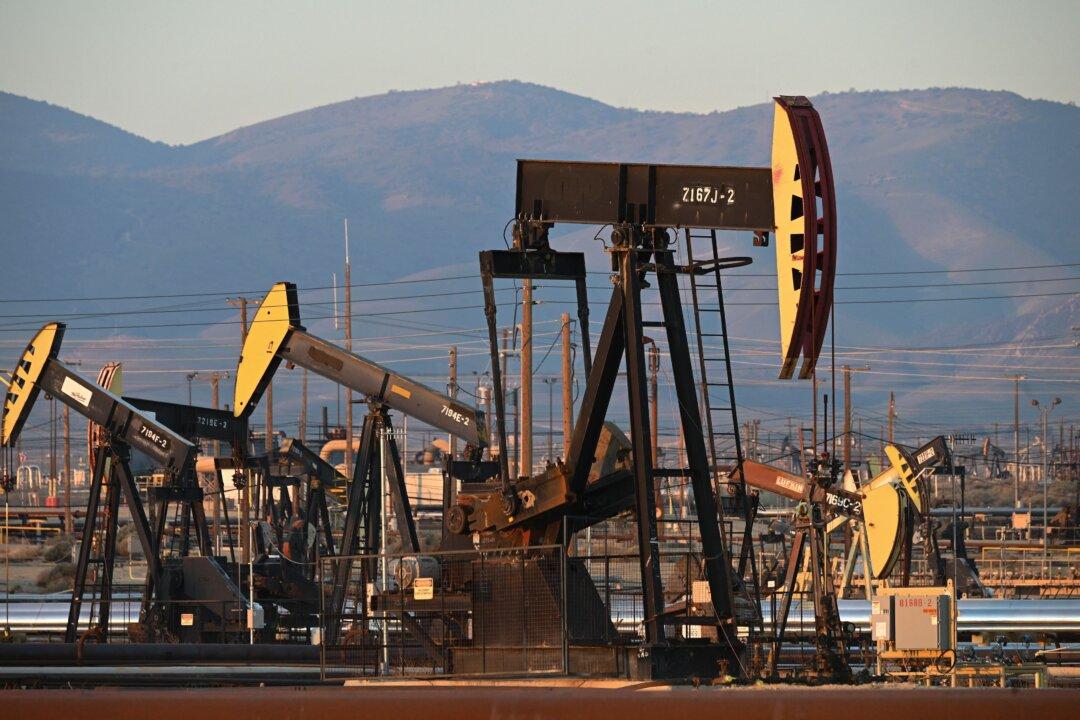Crude oil soared in price after Saudi Arabia extended its voluntary production cut of 1 million barrels per day (bpd) for another three months until the end of December, state-owned media reported.
As a result of the extension, Saudi Arabia’s output will total 9 million bpd in October, November, and December.
“The source also noted that this cut is in addition to the voluntary cut previously announced by the kingdom in April 2023, which extends until the end of December 2024.”
October West Texas Intermediate (WTI) crude futures surged as much as 2 percent on the news, firming above $87 a barrel on the New York Mercantile Exchange. Brent crude, the international benchmark for oil prices, topped $90 a barrel on London’s ICE Futures exchange.
U.S. and Brent crude prices are up 8 percent and 5 percent, respectively, year to date.
Riyadh first launched its 1 million-barrel-per-day reduction in July as oil prices struggled to stay above $70 per barrel. Officials have asserted for the past year that there was a significant disconnect between paper and physical energy markets. Since then, the kingdom has led the Organization of the Petroleum Exporting Countries (OPEC) and its allies, OPEC+, in voluntary cuts to establish a price floor for oil prices.
Russian Deputy Prime Minister Alexander Novak announced that the country is trimming output by 500,000 bpd until the end of 2024. The energy powerhouse decreased exports by 500,000 bpd in August and an additional 300,000 bpd in September.
Big Trouble in China
The world’s major oil producers might be concerned about China’s continued slowdown, with the latest economic data pointing to anemic growth, which could weigh on energy demand.However, there’s a growing concern about long-term demand from China, with some asserting that India offers the potential for long-term oil demand growth amid a robust economy.
Kang Wu, global head of demand research at S&P Global, warned that peak oil demand in China will arrive earlier than in India due to the emerging market’s “economic expansions and a young population.”
Oil Markets Feeling Tight
While demand concerns linger throughout the global economy, the data reveal that worldwide oil markets are tightening and will shift into a deficit this month.“However, this deficit is heavily skewed towards the second half of 2024. In fact, we see a small surplus in 1Q24, which suggests that prices could pull back early next year, before moving higher once again.”
ING analysts anticipate more upside in oil prices, with WTI and Brent touching $92 and $88 per barrel in the fourth quarter. They also forecast that WTI and Brent will climb to $93 and $96 in the fourth quarter of next year.
“The assumption behind our 2024 forecasts is that OPEC+ sticks to its planned production targets, whilst the 1.66MMbbls/d of additional voluntary cuts from a handful of OPEC+ producers also continue through 2024,” Mr. Patterson said.
Ben Luckock, co-head of oil trading at Trafigura, explained during an APPC panel discussion that oil is vulnerable to price spikes “because of the long-term underinvestment in new oilfields.”

This could lead to more pain at the pump, too.
“Refiners are struggling to keep up with demand growth, as the shift to new feedstocks, outages, and high temperatures have forced many operators to run at reduced rates,” the EIA noted. “Tight gasoline and diesel markets have pushed margins to six-month highs.”
According to the American Automobile Association, the national average for a gallon of gasoline is $3.81, up about 20 percent year to date. Diesel prices have risen to their highest levels this year, topping $4.45 per gallon.







